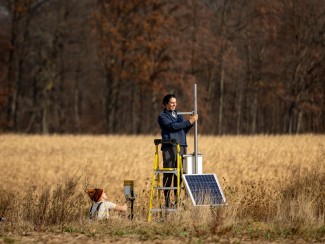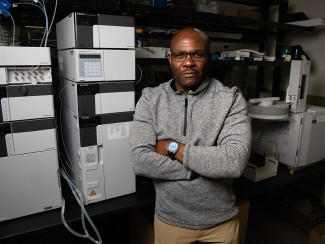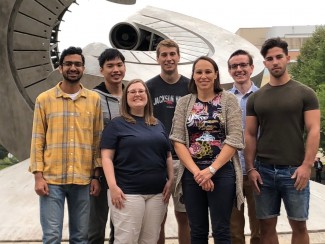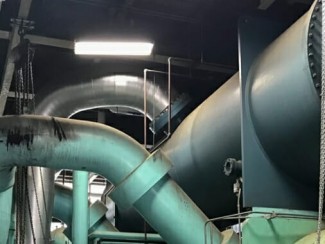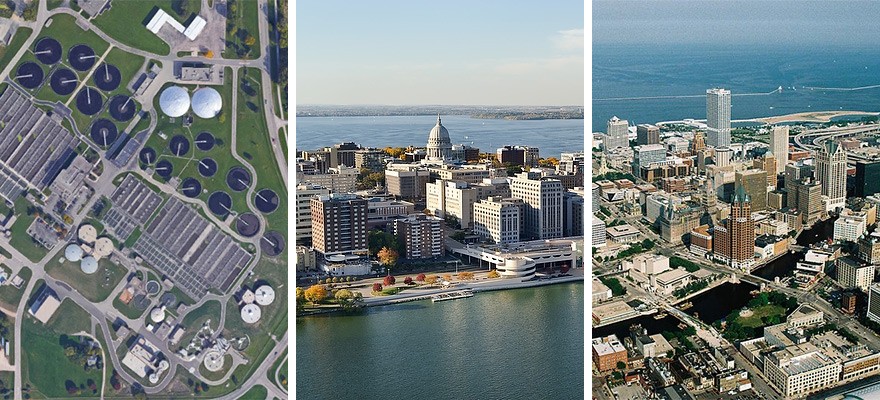
We don’t think about it when we turn on the faucet for a cold drink of water, but it takes quite a bit of energy to fill that glass. How much energy is a question that University of Wisconsin–Madison graduate students Andrew Behm, Andy Lick, and Annie Lord spent this past spring pursuing.

The student team worked with the Public Service Commission (PSC) of Wisconsin to complete the capstone project required to earn an Energy Analysis and Policy (EAP) certificate from the Nelson Institute for Environmental Studies at UW–Madison. In turn, the PSC, an independent agency responsible for regulating Wisconsin’s utilities, including 580 water utilities, gained insight into how to save water, energy, and money.
“The PSC wanted to use water treatment data submitted by each utility to estimate the energy embodied in drinking water,” Behm says. “This would allow them to better understand how water utilities use electricity, and what opportunities exist to conserve it.”
The term “embodied energy” refers to the energy needed to pump groundwater or surface water to the water treatment plant, and to operate the equipment that removes contaminants and makes the water suitable for human consumption. By the time we quench our thirst with a glass of cold water, it already has a certain amount of embodied energy in it.
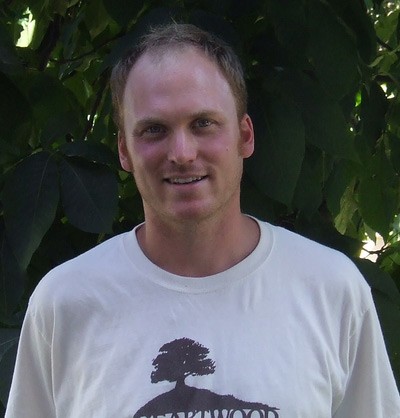
Behm, Lick, and Lord arbitrarily set embodied energy to zero at the water source. In Madison, the source is an underground aquifer; in Green Bay and Milwaukee, it’s surface water from Lake Michigan.
In Madison, where the aquifer’s groundwater has already been filtered by many layers of rocks, sand, and other natural materials, more energy is spent on operating pumps than on water treatment.
“You just need to add a little chlorine and Madison’s water is pretty much fit to drink,” Behm says.
For the Lake Michigan utilities, it’s the other way around: surface water requires less energy to pump up, but more energy to clean up. How much more depends on the nature of the utility’s water treatment process.

Working with engineering physics professor Paul Wilson, the students developed statistical methods for classifying utilities as low- versus high-electricity use, based on the power needs of their respective water treatment and pumping equipment.
“We also developed new categories for utilities to report treatment processes to the PSC,” Behm says. “They will allow for a better understanding of treatment expenses, based on each utility’s specific characteristics.”
The students’ analysis will also help utility managers make more informed decisions about infrastructure investments for reducing water loss, the difference between the amount of water pumped to the treatment plant versus the amount of water actually delivered to customers’ homes.
“To help utilities save both water and the energy embodied in that water, accurate cost estimates are key,” Behm says. “These estimates will help utility managers decide which future investments make the most financial sense: new water mains, new water meters, or more energy-efficient water treatment equipment.”

